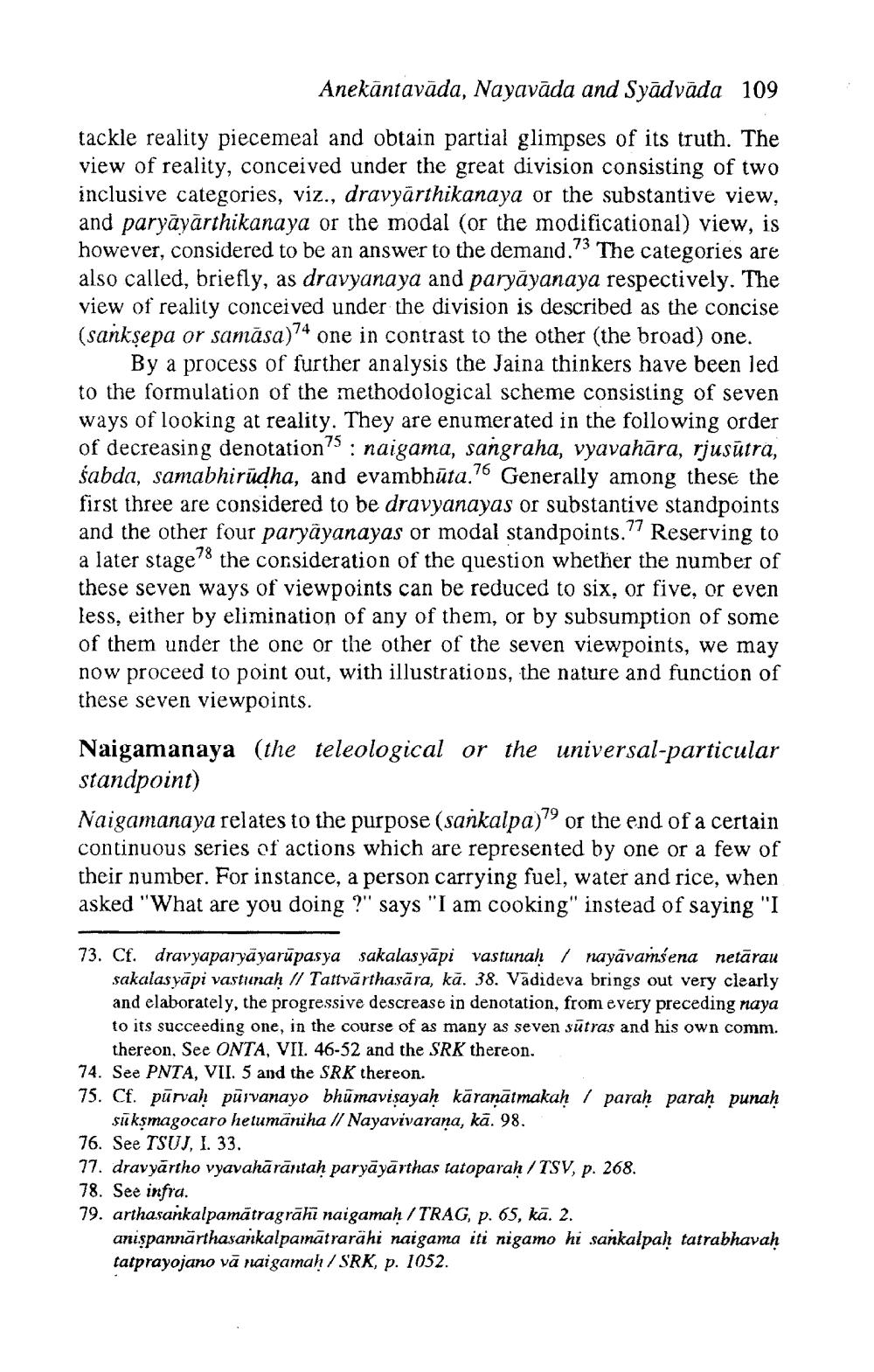________________
Anekāntavāda, Nayavāda and Syādvāda 109
tackle reality piecemeal and obtain partial glimpses of its truth. The view of reality, conceived under the great division consisting of two inclusive categories, viz., dravyārthikanaya or the substantive view, and paryāyarthikanaya or the modal (or the modificational) view, is however, considered to be an answer to the demand.73 The categories are also called, briefly, as dravyanaya and paryāyanaya respectively. The view of reality conceived under the division is described as the concise (sanksepa or samāsa) 4 one in contrast to the other (the broad) one.
By a process of further analysis the Jaina thinkers have been led to the formulation of the methodological scheme consisting of seven ways of looking at reality. They are enumerated in the following order of decreasing denotation75 : naigama, sangraha, vyavahāra, rjusutra, šabda, samabhirudha, and evambhūta.76 Generally among these the first three are considered to be dravyanayas or substantive standpoints and the other four paryāyanayas or modal standpoints." Reserving to a later stage78 the consideration of the question whether the number of these seven ways of viewpoints can be reduced to six, or five, or even less, either by elimination of any of them, or by subsumption of some of them under the one or the other of the seven viewpoints, we may now proceed to point out, with illustrations, the nature and function of these seven viewpoints. Naigamanaya (the teleological or the universal-particular standpoint) Naigamanaya relates to the purpose (sankalpa)? or the end of a certain continuous series of actions which are represented by one or a few of their number. For instance, a person carrying fuel, water and rice, when asked "What are you doing?" says "I am cooking" instead of saying "I
73. Cf. dravyaparyāyarūpasya sakalasyāpi vastunah / nayāvamćena netārau
sakalas yāpi vastunah // Tattvärthasāra, kā. 38. Vadideva brings out very clearly and elaborately, the progressive descrease in denotation, from every preceding naya to its succeeding one, in the course of as many as seven sūtras and his own comm.
thereon, See ONTA, VII. 46-52 and the SRK thereon. 74. See PNTA, VII. 5 and the SRK thereon. 75. Cf. pūrvah pūrvanayo bhūmavisayaḥ kāraṇātmakah / parah parah punah
sūksmagocaro hetumāniha // Nayavivarana, kā. 98. 76. See TSUJ, I. 33. 77. dravyārtho vyavahārāntah paryāyārthas tatoparah/TSV, p. 268. 78. See infra. 79. arthasankalpamätragrāhi naigamah / TRAG, p. 65, kā. 2.
anispannärthasankalpamātrarähi naigama iti nigamo hi sankalpah tatrabhavah tatprayojano vā raigamah/SRK, p. 1052.




